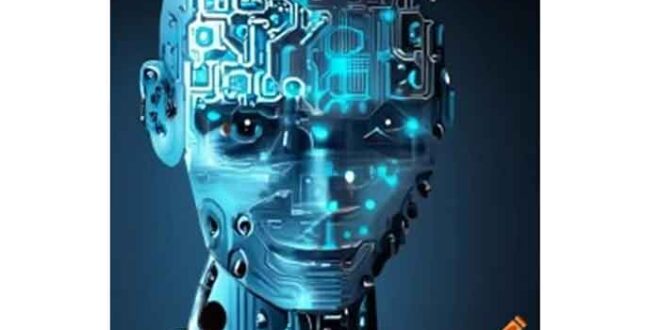Quest of immortality has been as timeless as it has remained fruitless. First recorded over 4000 years ago on the Babylonian Tablets, it narrates the tale of King Gilgamesh of Uruk. His recorded lament reads: “Then I was afraid that I too would die”. Ishtar, the mythical goddess of love, urges him to be content with his mortal life and “regard the little one who takes thy hand and the wife happy against thy bosom”. Unheeding; Gilgamesh turns his back on family and friends in a futile quest for eternal life.
Transcending ages, a young Bertrand Russell would refer to Earth bitterly as “the petty planet on which our bodies impotently craw” adding “brief and powerless is man’s life; on him and all his race the slow sure doom falls pitiless and dark”. Today, this dread sees some amongst the ultra-rich besotted with visions of immortality. Sensing a once in a (mortal) life opportunity, the biggest names in Silicon Valley now term death a fixable glitch. By 2025, this venture shall be an over $700 billion dollar industry.
Ray Kurzweil, AI visionary at Google, is the author of “The Singularity Is Near: When Humans Transcend Biology”. He prophesies a merger of AI and biological intelligence creating immortal software-based “humans” in a virtual civilization. Advocates of this cause can now be found in some of the most prominent universities, corporations, research laboratories and political institutions. Aubrey de Grey, a famed Cambridge gerontologist, leads the charge.
Oracle’s Larry Ellison, once remarked “death makes me very angry”. He has donated $430 million into research that can do away with the source of his anger. Google co-founder Larry Page found and funded Calico with $750 million to “solve the death problem”. PayPal co-founder Peter Thiel sees death as “the great enemy”. His Breakout Labs funds the drive for immortality.
Amazon Chairman Jeff Bezos and Russian billionaire Yuri Milner invested in Altos Labs, a $3 billion dollar biotechnology company working to alter life detriments. Elon Musk is funding a Neuralink project to merge minds and machines. Russian billionaire Dmitry Itskov’s 2045-Initiative seeks to achieve immortality with avatars replacing humans. Into the creation of his own avatar, Itskov envisages thousands of life years for himself.
Max More, a philosopher and futurist, owns Alcor, one of the largest cryonics facilities. Here, “death can be paused” as bodies and brains are preserved at minus 196°C to supposedly rejoin humanity after reanimation. These frantic forays have spawned the most bizarre. Apps like LivesOn now offer social media presence after death. Based on past data, it offers to generate postmortem tweets with the surreal claim “When your heart stops beating, you’ll keep tweeting”.
With humans creating the first stone tools 2 million years ago, evolution spread over millennia, is an extremely slow, arduous and complex process. It cannot be mega turbo boosted to redesign humankind itself. This gambit has some like historian Yuval Harari prophesying in his “Homo Deus: A Brief History of Tomorrow”, that homosapiens shall soon be replaced by homodeus or man-god. Once in a while a destructive calamity or a seemingly innocuous microorganism morphing into a devastating pandemic tries to show us our limitations. Yet, we remain beholden to the illusion that we are the masters who can force nature into submission.
Nick Bostrom, Professor at Oxford University, is a leading transhumanist philosopher. He writes in his bestselling “Superintelligence: Paths, Dangers, Strategies”, that true AI, if realized, shall pose a danger that exceeds all known threats. His stark warning; “if a super-intelligent machine’s development is not managed carefully, humanity risks engineering its own extinction”. Stephen Hawking, ever sceptical of runaway AI, wrote in his last book, “Brief Answers to Big Questions”: “Super-intelligent AI will be extremely good at accomplishing its goals and if those goals aren’t aligned with ours we’re in trouble”.
As a species, we have proven to be the most reckless and irresponsible, be it something seemingly as mundane as a cigarette which causes over 7 million deaths annually, industrial emissions ravaging our planet or the chilling specter of a nuclear winter. 8 billion humans make up a mere 0.01% of Earth’s biomass; viruses and worms each weigh three times more. Yet, we are enabling the sixth mass extinction, the only one by human activity, occurring in our planet’s 4 billion year history. Despite knowing that extinction of even a single species creates a negative ecological shift, our recklessness remains unbounded.
A WWF report reveals that in the last 50 years, 83% of wild mammals and half the plants have been lost; 1 million animals and plant species face extinction. A UNESCO study found that “the rate of species extinction over the past 50 years is at least tens to hundreds of times higher than averaged over the past 10 million years”. In our own backyard, the Hindu Kush Himalaya glaciers, a source of water for 2 billion people, are melting 65% faster than the previous decade. Experts warn that without immediate remedial measures, 80% of these glaciers shall be gone by the end of this century.
Looking up to the stars is a quality innate to humankind; keeping our responsibilities, boundaries and collective wellbeing in mind is an equal imperative. When famed astrophysicist Carl Sagan saw the famous earth photograph taken by Voyager 1 in 1990 he poignantly described it as “The Pale Blue Dot; a mote of dust suspended in a sunbeam”. He wrote: “To me, it underscores our responsibility to deal more kindly with one another, and to preserve and cherish the pale blue dot, the only home we’ve ever known”. As for those craving immortality, novelist Susan Ertz was spot on when she described them as those “who do not know what to do with themselves on a rainy Sunday afternoon”.
 Eurasia Press & News
Eurasia Press & News


